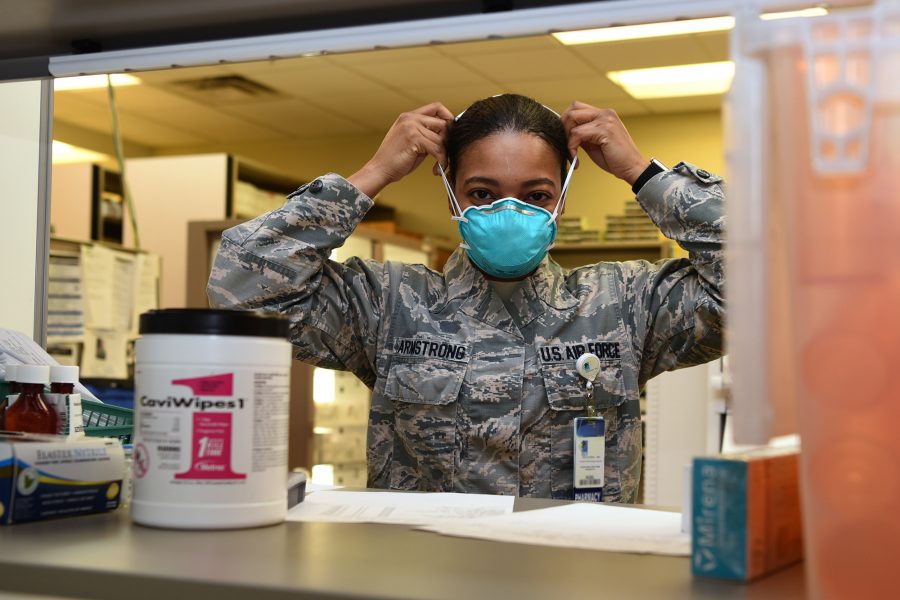Editor’s Note: This story was updated on April 6 at 4:05 p.m. EST to include Air Force-level mask guidance.
The Defense Department wants members of the military community to start covering their faces in public settings to help fight the COVID-19 pandemic. But don’t look for uniformity in the masks: Everyone is to make their own masks until standard ones are available.
Updated guidance from the Centers for Disease Control and Prevention recommends “cloth face coverings” to prevent the spread of the new coronavirus. DOD instructed troops, civilian employees, contractors, military family members, and anyone else setting foot “on DOD property, installations, and facilities” to don “cloth face coverings … in public areas or work centers” where maintaining social distancing of six feet or more isn’t possible.
“Exceptions to this requirement may be approved by local commanders or supervisors, and then submitted up the chain of command for situational awareness,” Defense Secretary Mark Esper noted. “Security checkpoints may require the lowering of face covers to verify identification.”
The new instructions are in effect immediately. Each military department will publish its own instructions for how such coverings should be worn.
Esper’s memo advised that DOD will not provide protective equipment for this purpose, since medical-quality masks are in short supply and set aside for “appropriate personnel.” Instead, he encouraged service members and civilians to craft their own cloth masks using “household items or common materials, such as clean T-shirts or other clean cloths that can cover the nose and mouth area.” The CDC posted three DIY mask patterns on its website for this purpose.
The CDC had held off advising individuals without COVID-19 symptoms nor caring for or living with others who do, but changed its policy late last week.
“We now know from recent studies that a significant portion of individuals with coronavirus lack symptoms (“asymptomatic”) and that even those who eventually develop symptoms (“pre-symptomatic”) can transmit the virus to others before showing symptoms,” its website states. “In light of this new evidence, CDC recommends wearing cloth face coverings in public settings where other social distancing measures are difficult to maintain (e.g., grocery stores and pharmacies) especially in areas of significant community-based transmission.”
A national shortage of N95 particulate respirator and surgical masks continues. President Donald Trump last week asked U.S. manufacturer 3M to stop sending N95s to Canada and Mexico until the U.S. shortage eases.
Air Force Guidance
USAF is not requiring “uniformity” of actual or improvised masks, so long as the options Airmen choose to wear “are conservative, professional, and in keeping with dignity and respect,” according to an April 6 release about the service’s mask guidance.
“Any cloth items worn as face coverings [e.g., neck gaiters, neck warmers, balaclavas, etc.] should be functional, cleaned, and maintained in compliance with current Air Force instructions, and should cover the mouth and nose,” the release stated.
It’s up to commanders to make the call if “mission safety” demands that Airmen break with the service’s guidance, the release added.
While Air Force civilians are “strongly encouraged” to cover their faces in public places where social distancing proves challenging, the release noted that commanders can’t force them to wear masks unless they either hand them out to employees or give them uniform allowances to cover their cost.
“If a commander determines the purchase and issuance of cloth face coverings is necessary for mission requirements, they should consult with legal and comptroller about purchasing and issuing the coverings,” the guidance said.
The release acknowledged that using cloth masks doesn’t stop wearers from falling ill “or eliminate the need to continue the primary mitigation efforts to stop the spread of COVID-19,” though they may keep wearers from spreading the virus themselves.
